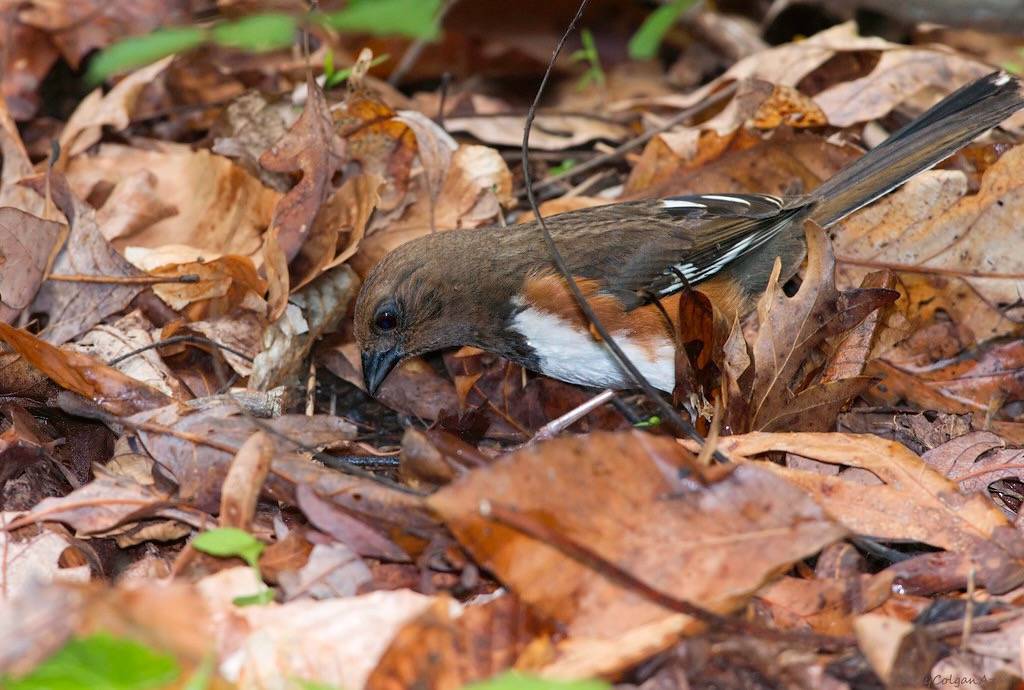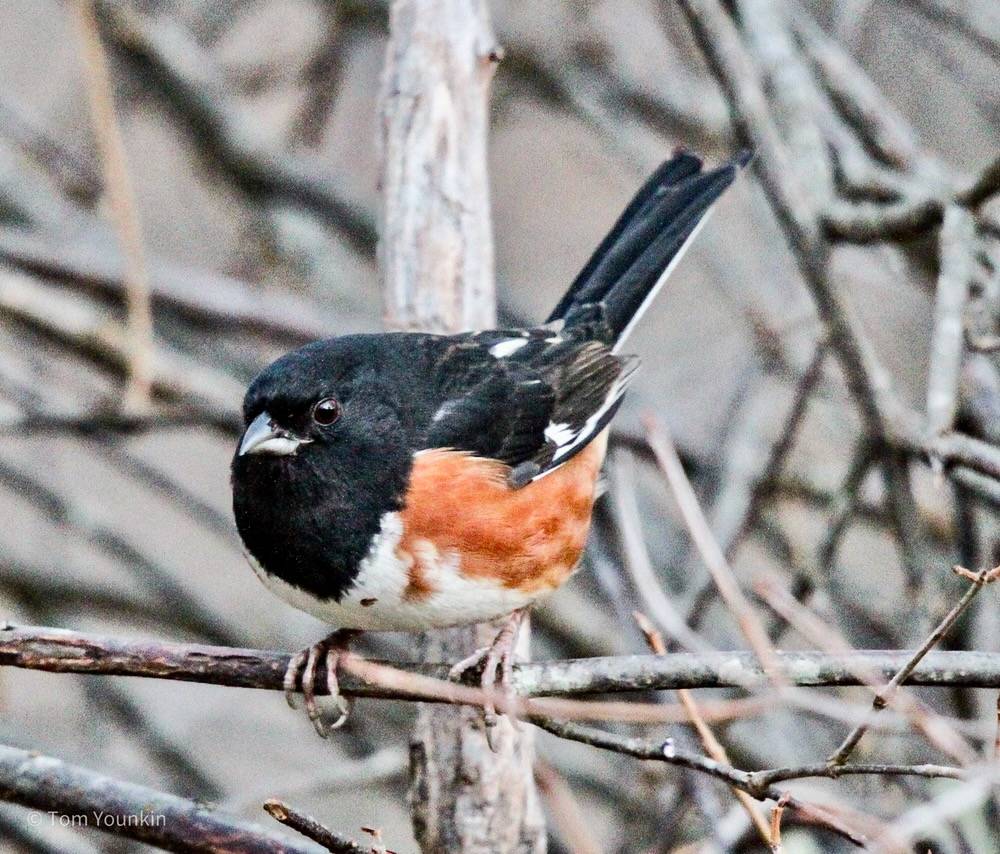Eastern Towhee
It is difficult to see the Eastern Towhee when it visits Salter Grove during spring and fall migration. It favors dense shrubbery where its strikingly colored plumage is not at all visible. However, it often gives away its location as it scratches noisily in the leaf litter for insects, seeds and fruits in the upland woods of the park.
Salter Grove is well within the breeding range of the Eastern Towhee, which encompasses southeast Canada and eastern United States. However, the park lacks the large expanse of shrubs and thickets that provide suitable foraging and nesting habitats for towhees.
The decline of the Eastern Towhee in the northeastern United States in recent decades is related to the maturing of scrubland into taller vegetation along forest edges, and to farmland becoming well-manicured suburban housing developments. However, towhees have increased in numbers in some areas of the Smoky Mountains where the death of mature fir trees due to an introduced insect has resulted in more scrubland.
The Eastern Towhee is a favorite host of the brood parasite Brown-headed Cowbird. Some parasitized bird species are able to recognize the cowbird egg as different and remove it from their nests, but not towhees. Their eggs look very similar to cowbird eggs. Studies have shown that as many as half of the towhee nests in some areas are successfully parasitized by cowbirds. It does not help that the female cowbird removes a towhee egg as she lays her own. The towhee's only defense may be catching the female cowbird in the act!
The first written description of the Eastern Towhee was made in 1582 when painter-cartographer John White made a visit to the failed settlement on Roanoke Island, North Carolina.















